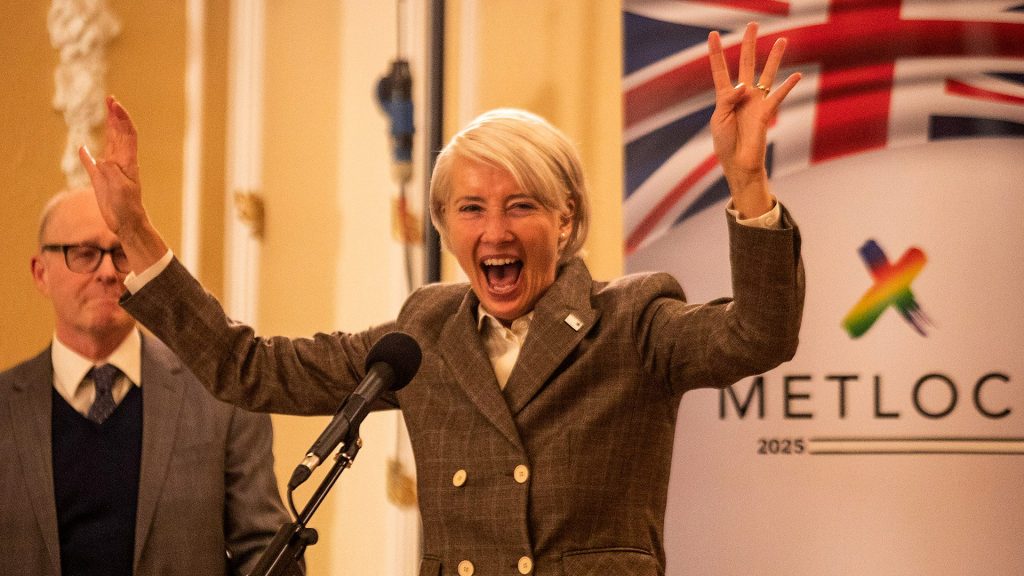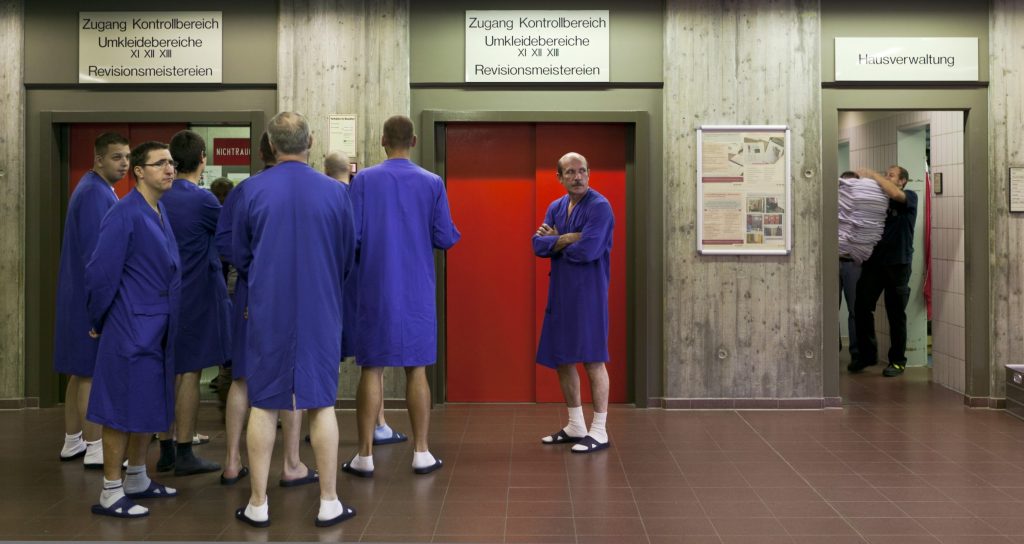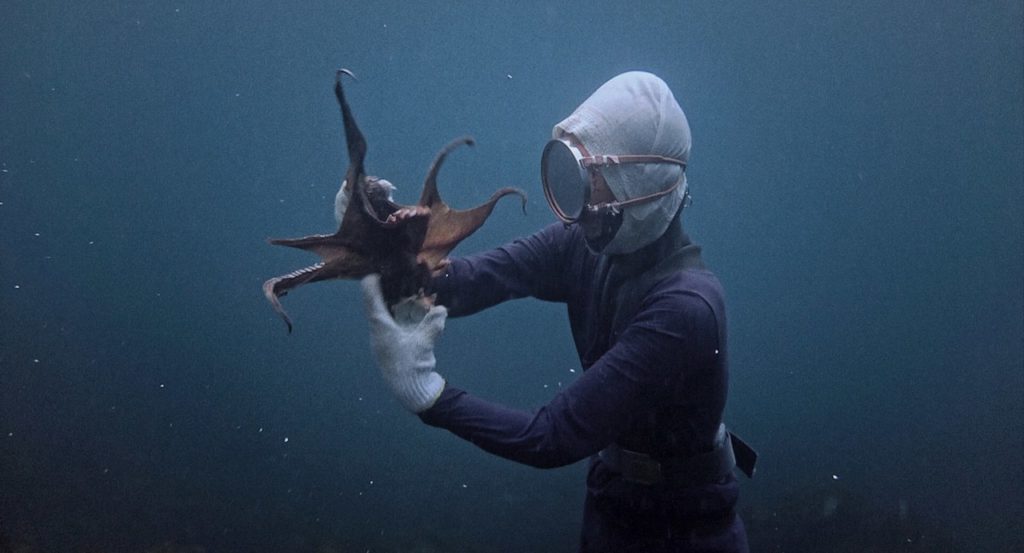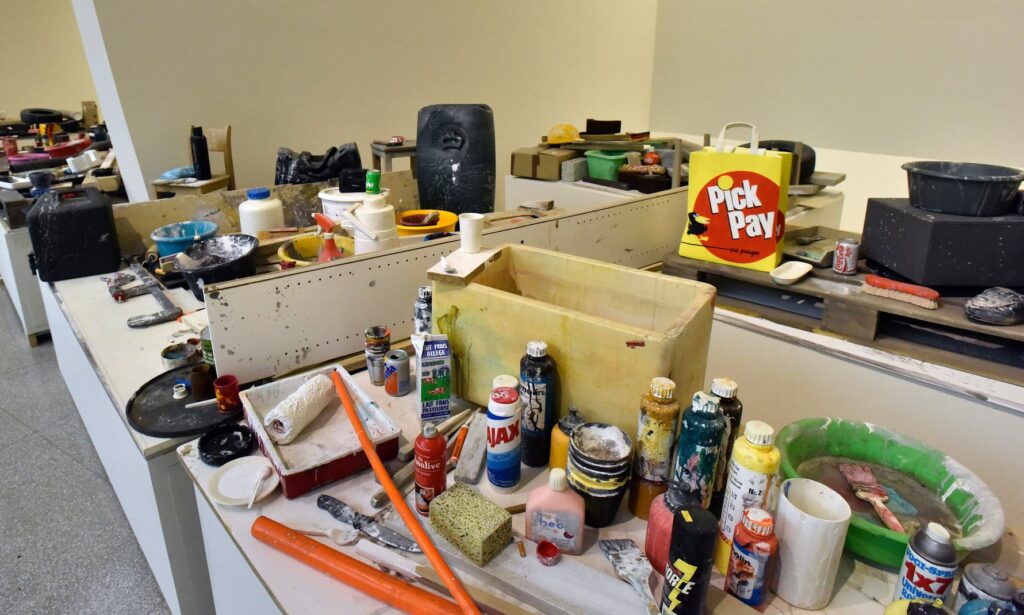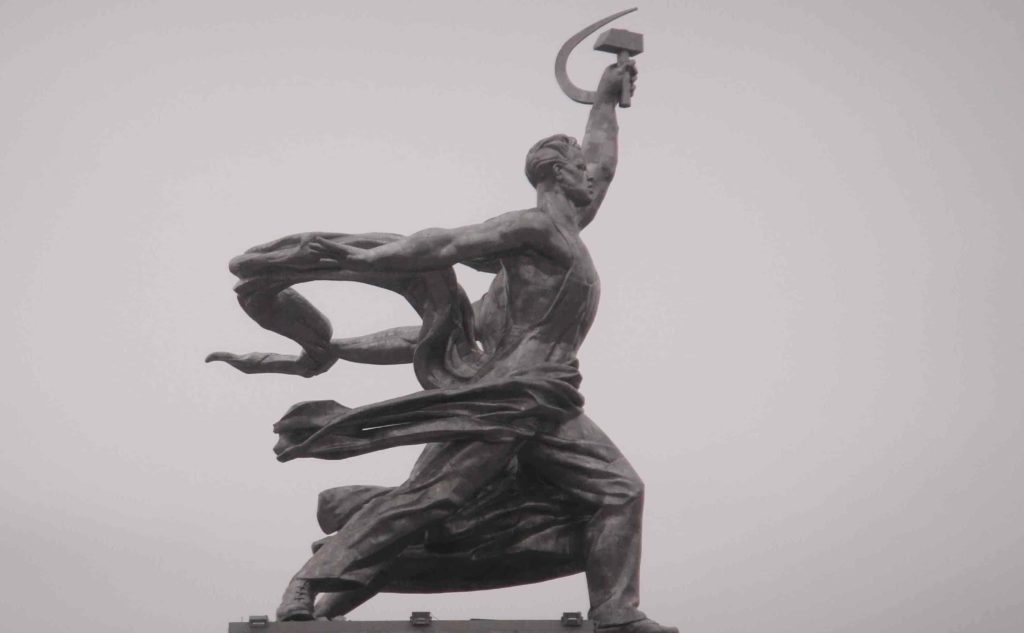The limits of our imagination of the future: men doing housework!
Analyses of historical conceptions of the future can be eye-opening. On the one hand, the eagerness to imagine one’s future can be understood as by-product of mortality, to micro-manage the uncertainty inherent in being, with a hidden desire to predict and control what one’s existence will be like. On the other hand, in such analyses one cannot avoid validating the accuracy of the predictions: sometimes the imagined futures become true, tangibly, in other cases it remains pure fantasy. When viewed retrospectively, the former often leads to amazement, the latter to amusement.
Reviewing infomercials and advertisements by seemingly large tech corporations from the years 1950–1970, which can be found in large numbers on YouTube, one can do both, marvel and smile.
This period, which also included the dawn of the atomic age, the space age and the computer age, was overloaded with imaginings of the future. Two areas seem to be illuminated in such films: the world of work, where the miracle of automation and the acceleration of communication are emerging, and the domestic world, with new devices for various cleaning and cooking activities (see the films: Challenge of Change (1961), The Home of 1999 (1967), The 21st Century (1967) as well as the films listed in the post: ‘The old fear of the end of new work itself’).
We can analyse these films by focusing on the innovations that entered each life over the course of time. We find, for example, the first home computers that enabled teleworking (“home office”), shopping from home (“online shopping”) and distance learning (“e‑learning”). We find communication systems that facilitated the exchange of information between people, between people and machines, and also between machines (keyword: Internet of Things). In the domestic sphere, for example, we find fully-automated kitchens with microwave ovens and pre-packaged foods that conjure up a dish at the push of a button.
At first glance, one can only marvel at the foresight and creativity of the producers, who were able to foresee a series of technological innovations that would later become the norm. Such imagined futures seem surprisingly close to our present. On closer inspection, however, there is something up with these predictions of the future: the role of women. In all these films, the person who runs the kitchen is female, similarly the office is run by only female secretaries.
One can only wonder that the futurologists of the time were unable to imagine a social change that would harmonise the separation between male and female jobs. Could it be that it is easier to imagine technological innovations than social ones? Or perhaps certain social changes were undesirable in the milieus of new technologies at the time? Or perhaps the audiences for which these films were made would have found such social innovations too futuristic?
There are probably no simple answers to these questions. But the films themselves provide first clues. In the “Challenge of Change” (1961) the narrative voice reminds us of the saying “The more things change, the more they stay the same” (min 11:30) and “The Home of 1999” (1967) closes with the beautiful sentence: “The world of 1999 and beyond is limited only by the boundaries of our imagination today” (min 4:20).
The statement obviously emphasizes the power of human imagination. At the same time, however, it points precisely at the limits of imagination that constrained the futurologists of the time in their conception of a more egalitarian future. Perhaps with a little more forethought, the technologists of the 1950s and 1960s, could have solved inequality between men and women by now.…
Lorenzo Bonoli is Philosopher and Senior Researcher at the Swiss Federal Institute for Vocational Education and Training (SFIVET) in Lausanne.
References:
Rehlinghaus, Franziska und Ulf Teichmann (Hg.) (2020) Vergangene Zukünfte von Arbeit Aussichten, Ängste und Aneignungen im 20. Jahrhundert. Politik- und Gesellschaftsgeschichte, Band 108, Dietz-Verlag.
'The Home of 1999', PhilcoFord, 1967, min 24:33
'Challenge of Change', AT&T, 1961, min 15:44
'The 21st Century', 1967, min 25:05

'The Home of 1999', 1967, Filmstil
© PhilcoFord
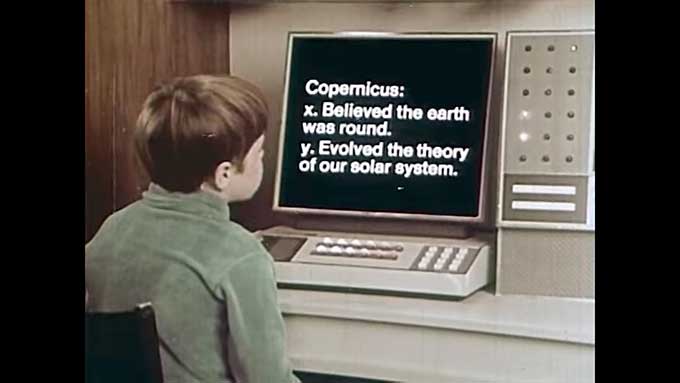
'The Home of 1999', 1967, Filmstil
© PhilcoFord,
The limits of our imagination of the future: men doing housework!
Analyses of historical conceptions of the future can be eye-opening. On the one hand, the eagerness to imagine one’s future can be understood as by-product of mortality, to micro-manage the uncertainty inherent in being, with a hidden desire to predict and control what one’s existence will be like. On the other hand, in such analyses one cannot avoid validating the accuracy of the predictions: sometimes the imagined futures become true, tangibly, in other cases it remains pure fantasy. When viewed retrospectively, the former often leads to amazement, the latter to amusement.
Reviewing infomercials and advertisements by seemingly large tech corporations from the years 1950–1970, which can be found in large numbers on YouTube, one can do both, marvel and smile.
This period, which also included the dawn of the atomic age, the space age and the computer age, was overloaded with imaginings of the future. Two areas seem to be illuminated in such films: the world of work, where the miracle of automation and the acceleration of communication are emerging, and the domestic world, with new devices for various cleaning and cooking activities (see the films: Challenge of Change (1961), The Home of 1999 (1967), The 21st Century (1967) as well as the films listed in the post: ‘The old fear of the end of new work itself’).
We can analyse these films by focusing on the innovations that entered each life over the course of time. We find, for example, the first home computers that enabled teleworking (“home office”), shopping from home (“online shopping”) and distance learning (“e‑learning”). We find communication systems that facilitated the exchange of information between people, between people and machines, and also between machines (keyword: Internet of Things). In the domestic sphere, for example, we find fully-automated kitchens with microwave ovens and pre-packaged foods that conjure up a dish at the push of a button.
At first glance, one can only marvel at the foresight and creativity of the producers, who were able to foresee a series of technological innovations that would later become the norm. Such imagined futures seem surprisingly close to our present. On closer inspection, however, there is something up with these predictions of the future: the role of women. In all these films, the person who runs the kitchen is female, similarly the office is run by only female secretaries.
One can only wonder that the futurologists of the time were unable to imagine a social change that would harmonise the separation between male and female jobs. Could it be that it is easier to imagine technological innovations than social ones? Or perhaps certain social changes were undesirable in the milieus of new technologies at the time? Or perhaps the audiences for which these films were made would have found such social innovations too futuristic?
There are probably no simple answers to these questions. But the films themselves provide first clues. In the “Challenge of Change” (1961) the narrative voice reminds us of the saying “The more things change, the more they stay the same” (min 11:30) and “The Home of 1999” (1967) closes with the beautiful sentence: “The world of 1999 and beyond is limited only by the boundaries of our imagination today” (min 4:20).
The statement obviously emphasizes the power of human imagination. At the same time, however, it points precisely at the limits of imagination that constrained the futurologists of the time in their conception of a more egalitarian future. Perhaps with a little more forethought, the technologists of the 1950s and 1960s, could have solved inequality between men and women by now.…
Lorenzo Bonoli is Philosopher and Senior Researcher at the Swiss Federal Institute for Vocational Education and Training (SFIVET) in Lausanne.
References:
Rehlinghaus, Franziska und Ulf Teichmann (Hg.) (2020) Vergangene Zukünfte von Arbeit Aussichten, Ängste und Aneignungen im 20. Jahrhundert. Politik- und Gesellschaftsgeschichte, Band 108, Dietz-Verlag.
'The Home of 1999', PhilcoFord, 1967, min 24:33
'Challenge of Change', AT&T, 1961, min 15:44
'The 21st Century', 1967, min 25:05

'The Home of 1999', 1967, Filmstil
© PhilcoFord

'The Home of 1999', 1967, Filmstil
© PhilcoFord,

The Future of Work: Science and Science Fiction
Futurology has long since established itself as a scientific discipline. Why research should not be aversed to borrow from science fiction films becomes evident in the British miniseries Years and Years (2019) by Russell T. Davies.
THE WALKING MAN
Work ennobles. Work makes life sweeter. Sayings like these apodictically inscribe the principle of work into people's consciousness as the right and good thing to do. When American TV show us an example of this ideal, it is to double-down on the proliferation of the message of ‘a hero of labour’ : James Roberston – the walking man.
Power Plant Employment
Movies and documentaries on reactor disasters were trending last year. 10 years since Fukushima and 35 years since Chernobyl rolled the carpet out. For a true insight into the working world of nuclear power plants, however, I do recommend going further back, to Volker Sattel's "Unter Kontrolle" (2011).
Japan’s sea lions
Anti-stereotypical professions: Ama-San and Haenyo ─ apnoea divers in Japan and Korea
Fischli and Weiss as DIY
A young Youtuber has presumably unwittingly made a remake of Fischli and Weiss' famous art video "The Way Things Go" (1987), raising interesting questions about the relationship between art, professional craft and DIY.
Fitness to work?
Under the topos ‘health’, a comprehensive optimization and enhancement logic is implanted into people. Fitness is one of several influencing factors in establishing innovative, exceptional and performative entrepreneur of oneself.

About this blog
By selecting a film or an image, this blog literally illustrates the vast sphere of work, employment & education in an open collection of academic, artistic and also anecdotal findings.
About us
Konrad Wakolbinger makes documentary films about work and life. Jörg Markowitsch does research on education and work. They are both based in Vienna. Information on guest authors can be found in their corresponding articles.
More about
Interested in more? Find recommendations on relevant festivals, film collections and literature here.
About this blog
With picking a film or an image, this blog literally illustrates the vast sphere of work, employment & education in an open collection of academic, artistic and also anecdotal findings.
About us
Konrad Wakolbinger makes documentary films about work and life. Jörg Markowitsch does research on education and work. We both work in Vienna. Information on guest authors can be found in their respective articles.
More about
Interested in more? Find recommendations on relevant festivals, film collections and literature here.


